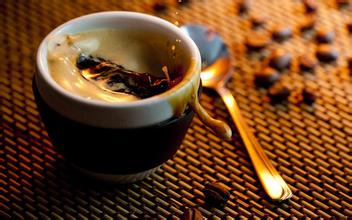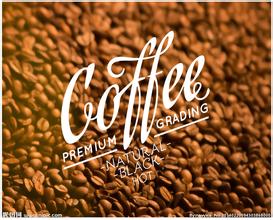Introduction to the characteristics of Brazilian Coffee Flavor and Fruit Coffee beans
Brazil is known as the kingdom of coffee. It is the largest coffee producer and exporter in the world. The output value of coffee accounts for more than 30% of the world's output value. 1% of the coffee in the world is produced here. Brazil is also the second largest coffee consumer in the world after the United States. About 300000 farmers here are engaged in the coffee industry. It not only carries the important task of Brazil's economic development, but also affects the development of international coffee. You should know that the vast majority of instant coffee is made from Brazilian coffee. Although Brazilian coffee accounts for 30% to 35% of the world's annual output value, ranking first in the world, it is a pity that none of the Brazilian beans can be called cutting-edge coffee. There are coffee trees all over the mountains, distributed in the southern part of Brazil. Compared with other coffee-producing countries in Central and South America, Brazil is significantly lower, with farms mostly about 600-1000 meters above sea level, and even South Minas, Serrado and Mojiana, the three major boutique producing areas, rarely exceed 1300 meters. Brazil's terrain is too flat and monotonous for coffee cultivation, and it lacks a microclimate that can give coffee rich taste factors, so there are many kinds of Kaddura, New International and Kaduai Brazilian coffee, which are suitable for growing without shade. It is difficult to say that it has any extra flavor, no outstanding advantages and no significant disadvantages, most of which are medium-sour and taste lubricated. The main thing is gentle and smooth, mellow and sweet, its softness makes it mix with other coffee beans, the taste will not change much. And rich in oil quality contrast. So Brazilian coffee beans are best mixed with other coffee beans to make espresso, which forms a golden foam on the surface of espresso and gives the coffee a slightly sour taste and a long finish. In fact, all the big coffee roasters have some bird shit coffee from Brazil in their blended coffees. Although Brazil is one of the countries with the most abundant freshwater resources in the world, its water resources are unevenly distributed, and many areas depend on natural draught. Especially in the east where coffee cultivation is concentrated, serious droughts often occur, and scarce water resources limit the way coffee is processed. Before 1990, Brazil almost all used rough sun exposure, and the quality varied greatly. Because bird poop coffee fruit in the process of exposure for up to two to three weeks, when the rain returns to tide or the fruit is cracked, it will become moldy and smell. As a result, Brazilian beans have become synonymous with low-and medium-quality. As the world's largest coffee producer, how can it be reconciled to such a reputation? in order to improve its quality and reverse its image, Brazil carried out a quality revolution in the 1990s and vigorously promoted the global half-sun method.
Based on the monotonous climate of Brazil, Brazilian research units have developed a half-sun method to shorten the processing time. After removing the pulp, the coffee fruit will be exposed to the pectin-coated pods for one to three days, and then machine-dried to a moisture content of 12%, which can be put into a storage container. The Brazilian half-sun method greatly shortens the work time (the traditional sun method takes two to three weeks), also reduces the chance of coffee beans getting a bad smell, and the quality is greatly improved. Moreover, the half-sun method also inherits the advantages of the sun method to improve the sweetness, but reduces the disagreeable soil flavor, and enhances the fruit aroma and sweetness, so it is most suitable for a single product, so the half-day method has become a necessary "wardrobe" of Brazilian fine beans and won the praise of international coffee experts.

Important Notice :
前街咖啡 FrontStreet Coffee has moved to new addredd:
FrontStreet Coffee Address: 315,Donghua East Road,GuangZhou
Tel:020 38364473
- Prev

Very aromatic and mellow Nicaraguan coffee flavor taste manor characteristics of boutique coffee beans
Managua, the capital of Nicaragua, is located in the west of the border, on the south bank of Lake Managua, hence its name. The northwest is 140 kilometers away from the Collinto seaport on the Pacific coast. 55 meters above sea level. It is a Spanish city with beautiful scenery. Because it is located to the east of the Pacific volcanic active seismic belt, there have been four strong earthquakes in the city in the past 100 years, including one in December 1972.
- Next

The taste of Kenyan coffee is rich and perfect. Introduction to fine coffee beans.
Implement the presidential system. The cabinet is composed of 26 members, including the President, the Vice President, ministers and the Attorney General. The current cabinet was established in June 2013 and is composed of the President, the Vice President, ministers and the Attorney General. The cabinet list is as follows: president Uhuru Kenyatta (Uhuru Kenyatta), Vice President William Luto (William Ruto), Ministry of Interior and Central Government Coordination
Related
- Detailed explanation of Jadeite planting Land in Panamanian Jadeite Manor introduction to the grading system of Jadeite competitive bidding, Red bid, Green bid and Rose Summer
- Story of Coffee planting in Brenka region of Costa Rica Stonehenge Manor anaerobic heavy honey treatment of flavor mouth
- What's on the barrel of Blue Mountain Coffee beans?
- Can American coffee also pull flowers? How to use hot American style to pull out a good-looking pattern?
- Can you make a cold extract with coffee beans? What is the right proportion for cold-extracted coffee formula?
- Indonesian PWN Gold Mandrine Coffee Origin Features Flavor How to Chong? Mandolin coffee is American.
- A brief introduction to the flavor characteristics of Brazilian yellow bourbon coffee beans
- What is the effect of different water quality on the flavor of cold-extracted coffee? What kind of water is best for brewing coffee?
- Why do you think of Rose Summer whenever you mention Panamanian coffee?
- Introduction to the characteristics of authentic blue mountain coffee bean producing areas? What is the CIB Coffee Authority in Jamaica?

